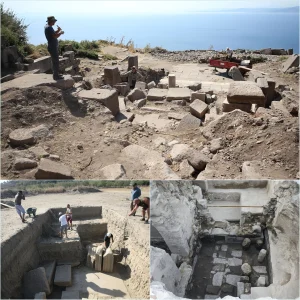
While excavating a 3,500-year-old tomb in Tel Megiddo, Israel, scientists uncovered a skull featuring a remarkable and unusual detail: a square hole indicative of an ancient brain surgery.

The details surrounding the operation remain shrouded in mystery. We do not know who performed this intricate procedure or what knowledge and skills they possessed. Questions abound regarding whether the patient was given any form of anesthesia or mind-altering substances, or if they endured the procedure in agonizing pain. The motivations behind such an extreme medical intervention also remain unclear.

Bioarchaeologist Rachel Kalisher from Brown University, who co-authored the study published in *PLOS One*, provides some insights. She hypothesizes that the surgery was a response to severe and worsening health conditions, although the exact reasons are speculative. Kalisher notes, “I can only hypothesize based off of the amount of pathological evidence that is on this individual that this was an intervention because of deteriorating conditions. But we don’t really have a clear answer.”
The study focuses on the remains of two Bronze Age brothers interred together in an elite area of Tel Megiddo, dating from around 1550 to 1450 BCE. Both siblings exhibited signs of developmental issues and chronic illness, with one showing clear evidence of trepanation—a procedure involving the drilling, cutting, or scraping of the skull to create an opening. While trepanation was practiced in various ancient cultures, such evidence is relatively rare in the Middle East.
Kalisher speculates that the brothers’ elevated social status might have allowed them access to medical care and resources that extended their lives beyond what would have been possible for others. Following the death of one brother, the surviving sibling might have undergone the surgery in a desperate bid to alleviate severe symptoms, though it ultimately proved futile.
The brothers were buried beneath the floors of their family home in the affluent Bronze Age city of Tel Megiddo, a significant urban center located along major trade routes connecting Egypt, Syria-Mesopotamia, and Anatolia. This city, known for its temples and monumental structures, was a hub of wealth and influence during the Bronze Age.





